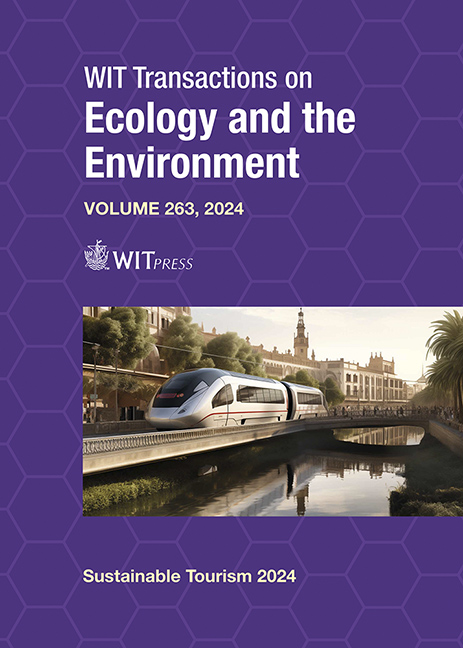AIR POLLUTION FROM CRUISE SHIPS DURING HOTELLING IN PORTS: A CASE STUDY IN ANCONA HARBOUR, ITALY
Price
Free (open access)
Transaction
Volume
263
Pages
7
Page Range
221 - 227
Published
2024
Paper DOI
10.2495/ST240181
Copyright
Author(s)
SIMONE VIRGILI, UMBERTO RIZZA, MARTINA TOMMASI, SILVIA DI NISIO, GIORGIO PASSERINI
Abstract
Air pollution caused by cruise ships during the hotelling phase in ports represents a significant source of emissions. The hotelling phase refers to the period during which ships remain docked and keep their main and auxiliary engines running to supply power to onboard systems. Numerous studies have shown that this practice significantly contributes to emissions of nitrogen oxides (NOx), sulphur oxides (SOx), particulate matter (PM), and carbon dioxide (CO2), degrading air quality in port areas and surrounding urban zones. Cruise ships, equipped with powerful internal combustion engines, release substantial amounts of pollutants even during hotelling. Emissions of NOx and SOx are particularly concerning due to their adverse health effects, associated with respiratory and cardiovascular diseases. Additionally, CO2 emissions significantly contribute to global greenhouse gas emissions, exacerbating the issue of climate change. The scientific literature has explored various solutions to mitigate these impacts. Among these, the implementation of cold ironing (shore power supply) and the installation of exhaust gas cleaning systems, such as scrubbers, have been identified as effective technologies. However, the adoption of these solutions is uneven globally, influenced by economic and infrastructural factors. In the case study conducted at Ancona Harbour, the analysis focused on a period during the COVID-19 pandemic when a cruise ship carrying COVID-positive passengers was docked in the port for over a month (Central Adriatic Ports Authority, https://porto.ancona.it/). This period was compared with the average pollutant levels of SO2, NOx, and PM10 during the same timeframe in 2019. The results showed that during the 2020 hotelling, the average concentrations of NOx were 63 µg/m3, PM10 was 15 µg/m3, and SO2 was 4.5 µg/m3. In contrast, during the same period in 2019, the average concentrations were significantly lower: NOx at 25 µg/m3, PM10 at 12 µg/m3, and SO2 at 2.5 µg/m3. These findings indicate a substantial increase in pollutant levels during the prolonged hotelling of the cruise ship in 2020, underscoring the environmental impact of such events. The case highlights the critical need for implementing effective emission reduction strategies, particularly in scenarios involving extended docking periods.
Keywords
cruise ship emissions, hotelling, cold ironing, covid, lockdown





